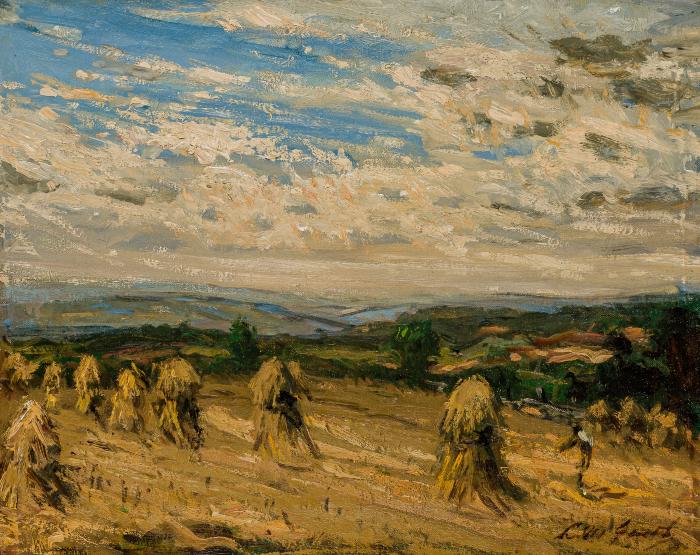Village Landscape - Haystacks
Lillian Genth (created by)
circa 1905 (Date manufactured/created)
oil
canvas, painting
signed lower right "L M Genth". Provenance: Private collection, Shannon’s Auctions, Mattatuck Museum. Born in Philadelphia, Genth studied at the Philadelphia School of Design and the Pennsylvania Academy of Fine Art. With the Elkin scholarship she went abroad and studied with Whistler. She settled first in France in 1901 and stayed in Europe for three years, painting landscapes and genre scenes. In 1904 Genth returned to the United States and made New York City her home. Her work was exhibited in group exhibitions and garnered her prizes. A mark of her success was her election to the Academy of Design as an Associate in 1908. Genth began her career as a landscape painter but in 1906 she began painting female nudes for which she became critically well-known. Over the next twenty years she produced approximately 150 nude paintings which were exhibited nationwide. Her work was very popular and brought her fame and wealth. She divided her time between New York City and Lime Rock, Connecticut where she had a summer home, Hermitcliff. The woods and hills around Hermitcliff form the background in many of the nude paintings. In the late 1920s, Genth turned away from the nude subject, announcing in 1928 that she stop painting nudes and “devote herself to Spanish and Oriental themes.” From the late 1920s through the 1930s Genth traveled through Spain and North Africa, and then further to Asia, painting in Tokyo, Hong Kong and Siam (today, Thailand), as well as the islands of Papua and Fiji among others. Exhibition opportunities lessened during the 1930s and by the time of her death in 1953, her art was little recognized. With the critical reception of abstract expression, her realist stylist seemed old-fashioned. Since the 1980s as feminist art scholars began to bring women artists of the past to today’s eyes, Genth has regained a place in the American art canon. Village Landscape is from the early part of Genth’s career. The subject (most likely) a French field is typical of works from that time. As well, the golden palette and tonalist style suggest the 1905 dating. (I will search for exhibition records when I get a chance.) CR
Museum Purchase, Acquisitions Fund, 2020
2020.22.1
